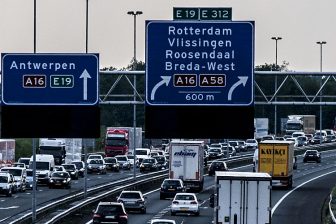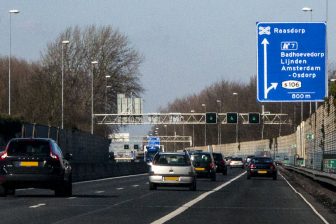Measures to revitalise European railway sector
Reference: IP/06/1802
European Commission proposes new measures to remove red tape hindering the development of railways throughout Europe
Brussels, Belgium – The European Commission adopted 2006-12-13 a series of measures to support the revitalisation of the railway sector by removing obstacles to the circulation of trains throughout the European rail network. The measures include a Communication on the simplification of certification of railway vehicles, a proposal to recast the existing Railway Interoperability Directives and to modify the Regulation establishing a European Railway Agency and the Railway Safety Directive.
Jacques Barrot, vice-president in charge of transport declared: “If railways are to become more competitive, we need to streamline and reduce the amount of rules that railway undertakings have to comply with before they are allowed to use the railway networks in the European Union. The measures the Commission adopted 2006-12-13 will accelerate and simplify these procedures, as well as contribute to significant cost reductions for the sector".
Among the proposed measures is a Communication on the amendment of several legal instruments in order to facilitate the cross-acceptance of railway rolling stock. Locomotives and other vehicles that can operate in one Member State are not necessarily accepted for operation in another Member State under current rules. Sometimes national safety rules are contradictory. In Italy, fire extinguishers on trains must contain CO2 powder and no foam, while Austria requires fire-extinguishers to be filled with foam whereas CO2 is not allowed! Furthermore, railway undertakings wishing to operate international services undergo repeated approval procedures for their rolling stock in each Member State. This often requires the provision of evidence that is not mutually recognised between Member States and can cause delays and costs. Certification may take up to 3 years to complete and is unnecessarily costly due to duplication.
Another initiative aims to streamline the certification process of rolling stocks by introducing cross acceptance of national tests and checks. The current lack of interoperability across the EU obliges, for example, operators to change locomotives and train drives when they cross borders. Although the European Community launched an ambitious common standards programme to overcome these obstacles, the pace of their introduction depends on new investments in the network and rolling stock. The transition towards new standards and the introduction of measures to facilitate cross border operations on the existing network therefore needs to be accelerated.
A Directive on the interoperability of the trans-European high-speed rail system[1] and another dealing with interoperability of the trans-European conventional rail system[2] also need to be amended in order to facilitate cross-acceptance of rolling stock. Both Directives aim to harmonise technical standards in rail transport by requiring the Commission to develop Technical Specifications for Interoperability. However, a single technical specification is sufficient for both conventional and high-speed rail systems, rendering the separation of the two directives unnecessary.
The Railway Safety Directive[3] will be modified by amending the article which defines the conditions under which rolling stock used in one Member State can be allowed to run on the network of another Member State. The mutual recognition of operating in-use rolling stock is proposed: rolling stock that has already been approved for service in one Member State shall not be submitted to the same or an equivalent procedure in another Member State, except for specific, national requirements.
Finally, the Regulation[4] establishing The European Railway Agency has been amended. The Agency will be mandated to develop a reference document with information on all the national rules in the domain of placing in service of railway rolling stock. Equivalent rules used in several Member States will be linked in order to facilitate cross-acceptance of rolling stock. The Agency will also organise the activities of the network of national railway safety authorities in order to reduce the number of national safety rules and to identify equivalent national rules. Finally, the Agency will be asked to elaborate opinions on technical issues at the request of the Member States or the Commission.
[1] Council Directive 96/48/EC of 23 July 1996 on the interoperability of the trans-European high-speed rail system, OJ L 235 of 17 September 1996.
[2] Directive 2001/16/EC of the European Parliament and of the Council of 19 March 2001 on the interoperability of the trans-European conventional rail system, OJ L 110 of 20 April 2001.
[3] Directive 2004/49/EC of the European Parliament and of the Council of 29 April 2004 on safety on the Community’s railways and amending Council Directive 95/18/EC on the licensing of railway undertakings and Directive 2001/14/EC on the allocation of railway infrastructure capacity and the levying of charges for the use of railway infrastructure and safety certification (Railway Safety Directive), OJ L 164 of 30 April 2004.
[4] Regulation (EC) No 881/2004 of the European Parliament and of the Council of 29 April 2004 establishing a European railway agency (Agency Regulation), OJ L 164, 30 April 2004
U las zojuist één van de gratis premium artikelen
Onbeperkt lezen? Profiteer nu van de introductieaanbieding voor € 10,- per maand.
Bent u al abonnee?



